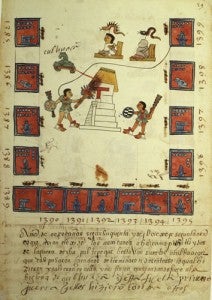
Abraham Lincoln, 1860.
The eternal teacher question: How do we get students interested in history? Engaging with students in diverse and creative ways is something teachers work to do on a daily basis. Taking the (let’s face it) sometimes dry facts of our textbooks and turning them into interesting and witty lessons that will inspire students, can be tiring, challenging, and downright frustrating. Why not take advantage of popular culture moments!
For example, today the Steven Spielberg movie “Lincoln” appears in theaters and offers a great opportunity to take a closer look at the Civil War. Connecting history with popular culture is an opportunity to open student’s eyes to the broader impact of historical events. What better way than a new movie to get students thinking of history as exciting and relevant rather than boring and outdated.
Daniel Day-Lewis takes on the iconic role that depicts the last few months of Lincoln’s life, the decisions he made in regards to the South, and the difficulty of those decisions. But, will our students appreciate what led to these important moments? Will they understand the roots of the War before heading to the movie? To help them get more out of their cinematic experience, turn to the late Roland Marchand for inspiration! Over the years, Marchand created a variety of lessons based on primary documents for his university classes. Particularly useful to pair with “Lincoln” is Marchand’s lesson “Lincoln and the Outbreak of War, 1861.” In it, students analyze the events in the first weeks of Lincoln’s presidency to determine his role in the conflict. The high school version provides a “Cast of Characters” and their voices to help students write a history of the Civil War. For middle school, students examine a collection of documents designed to help them understand Lincoln’s role.

Union recruitment poster, April 1861.
Teachers can supplement this trove of written sources with images from the Marchand Archives. Notices announcing the Union’s dissolution, recruitment posters, and paintings of important battles provide fodder for discussion. For what reasons did individuals go to war and continue to fight? How did politicians express these ideas expressed to the nation? What impact did battles have on local communities? On the nation?
Together, the document based lessons and the images, provide students with a solid background to help them better understand the movie. But more than that, analyzing historical sources helps students develop and hone the skills needed to become critical examiners of how history is interpreted through popular culture.







